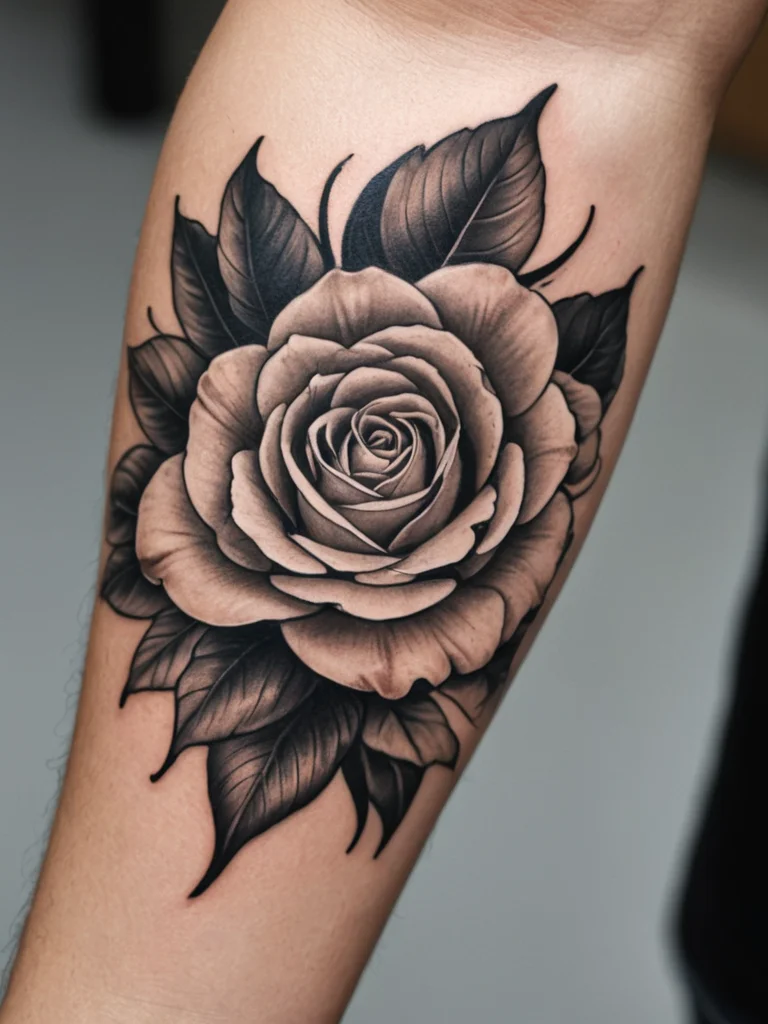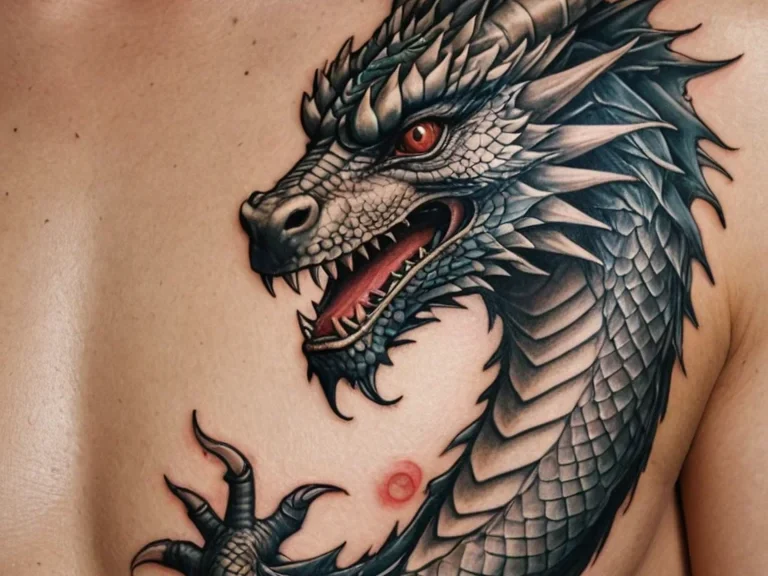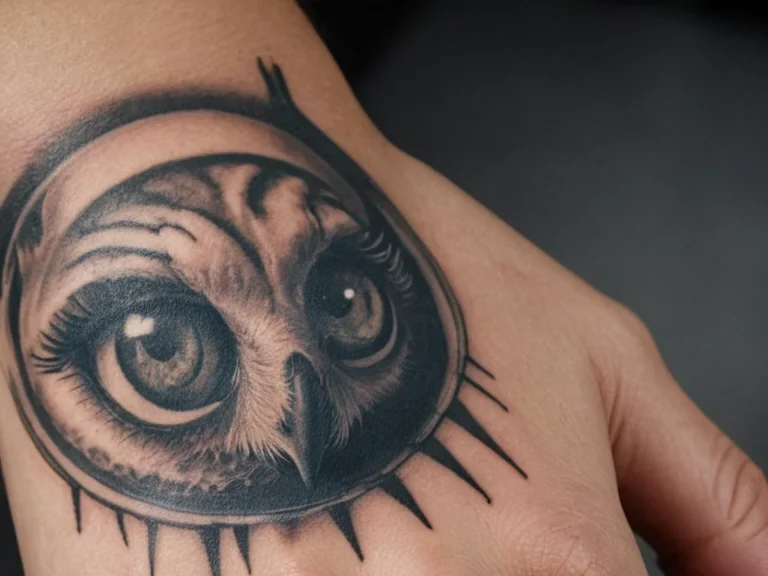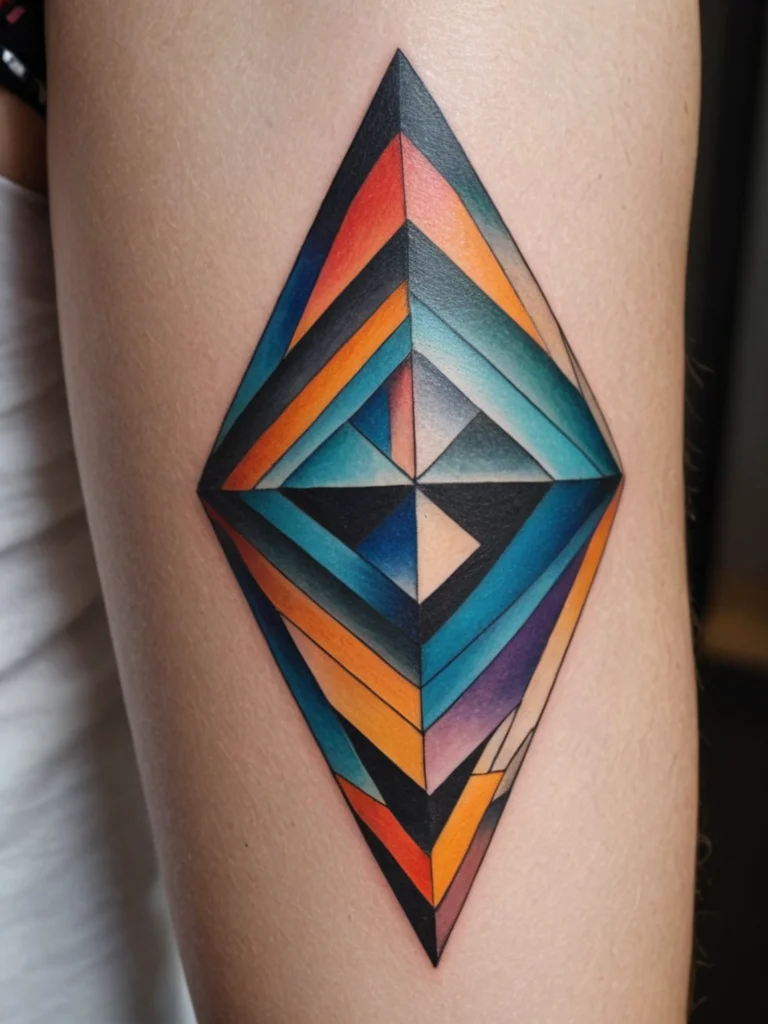The world of tattooing is a canvas of endless possibilities, and among its most revered techniques is freehand tattooing. This is where the tattoo artist draws directly onto the client’s skin, creating a unique design without the use of stencils. It’s a process that relies on skill, intuition, and a deep understanding of form, flow, and the human body. For those who have experienced the magic of a custom, freehand piece, or for artists eager to master this demanding yet rewarding discipline, understanding the nuances of this art form is crucial. Tattoo artists often recommend embracing freehand work as a pathway to unlocking true creative potential and delivering truly bespoke pieces that resonate deeply with clients.
Understanding freehand tattooing: what it is and why it’s special
Freehand tattooing is, at its core, drawing directly onto the skin. Unlike traditional methods that rely on transferring a pre-drawn design via stencil, freehand artists use markers, pens, and their own steady hand to sketch the tattoo’s outline and details directly onto the body. This approach allows for unparalleled adaptability. The design can be seamlessly integrated with the natural curves and contours of the client’s anatomy, ensuring a perfect fit and flow. It’s this intimate connection between the artist’s vision, the client’s body, and the tools on hand that makes freehand tattooing so special. Historically, many indigenous cultures used freehand methods for their sacred body art, imbuing the process with ritualistic significance. Today, it’s seen as a mark of an artist’s confidence and mastery, transforming the skin into a dynamic, living canvas.
The beauty of freehand lies in its spontaneity and organic nature. Because the design is created in the moment, it can evolve and adapt as the artist works. This allows for a level of customization that is difficult to achieve with stencils alone. Imagine a portrait that perfectly captures the subtle planes of a face, or a floral design that winds around an arm like a living vine – these are the results of an artist truly seeing and responding to the body as they draw. It’s a dialogue between the artist, the client, and the skin itself, leading to a tattoo that feels inherently personal and perfectly placed. Clients often feel a deeper connection to a piece that was envisioned and executed with such direct, personal artistry.
Why is it special? It’s the ultimate expression of an artist’s skill and creativity. It requires a deep understanding of anatomy, a keen eye for composition, and the confidence to execute a design without the safety net of a stencil. It allows for improvisation and on-the-spot adjustments, leading to unique pieces that are often more dynamic and integrated with the body than stencil-based work. Many experienced tattoo artists emphasize that while stencils are valuable tools, mastering freehand opens up new dimensions of artistic expression and client satisfaction.
Essential tools and setup for a flawless freehand tattoo

To embark on the journey of freehand tattooing, artists need a specific set of tools and a well-prepared workspace. The cornerstone of freehand work is the drawing implement. High-quality, skin-safe markers are essential. These come in various tip sizes, allowing for both fine detail and bolder lines. Popular choices include specialized tattoo markers, but many artists also find success with fine-tipped permanent markers like Sharpie pens or even specialized surgical markers. It’s crucial that these markers are non-toxic and create clean, visible lines that can be easily seen on the skin. Artists often experiment with different brands and tip sizes to find what best suits their drawing style and the complexity of the design.
Beyond markers, a clean and well-organized station is paramount. This includes:
- High-quality markers: A selection of fine, medium, and broad-tip skin-safe markers in black are standard. Some artists also use colored markers for preliminary sketching or specific effects, but black is the primary tool for outlining.
- Alcohol wipes/sanitizer: Essential for cleaning the skin before drawing and for cleaning the marker tips if necessary.
- Gloves: Always wear clean, disposable gloves to maintain hygiene and protect both the artist and the client.
- Paper and sketchpad: While the drawing is on the skin, having reference sketches or initial ideas on paper is vital. Artists often refine their freehand drawings on paper before committing to the skin.
- Good lighting: Excellent, adjustable lighting is non-negotiable. It allows the artist to see every line clearly, ensuring precision and accuracy. A magnifying lamp can be particularly helpful for intricate details.
- Comfortable seating: Both the artist and the client need to be comfortable. Ergonomic chairs and stable work surfaces are key for long sessions and steady hands.
- Reference materials: Inspiration can come from anywhere, but having access to reference images, anatomy charts, or mood boards can be helpful during the freehand process.
The setup should facilitate a smooth workflow. Having all your tools within easy reach, ensuring proper sterilization procedures are followed meticulously, and creating an environment where the artist can focus without distraction are all critical components of a successful freehand session. A calm and professional atmosphere instills confidence in the client and allows the artist to perform at their best.
Mastering the freehand technique: step-by-step guide for artists

The process of creating a freehand tattoo is a dance between artistic vision and anatomical understanding. It begins long before the marker touches the skin, with conceptualization and client consultation. Artists must listen carefully to the client’s ideas, preferences, and the intended placement and size of the tattoo. Understanding the client’s lifestyle and the body part where the tattoo will reside is crucial for creating a design that will age well and complement the individual.
Here’s a breakdown of the typical steps involved:
- Consultation and Concept: This initial phase is all about communication. Discuss the client’s vision, gather inspiration, and talk about placement. The artist mentally (or physically, with rough sketches) starts to visualize how the design will interact with the client’s anatomy.
- Anatomical Assessment: Before drawing, thoroughly examine the area where the tattoo will be placed. Observe the natural curves, muscle structure, bone prominence, and any areas of stretching or movement. This assessment informs how the design will flow and fit.
- Initial Sketching on Skin: Begin with light, tentative lines using your chosen marker. Focus on establishing the main forms and flow of the design. Don’t be afraid to erase (with alcohol wipes) and redraw. It’s better to adjust early than to commit to a flawed line. Think of these initial lines as building blocks.
- Refining the Outline: Once the basic shapes are established, start to refine the lines, adding detail and defining the edges of the tattoo. This is where the artist’s confidence and steady hand come into play. Build the design line by line, step by step, ensuring each element connects harmoniously with the others and with the body.
- Adding Detail and Shading Guides: As the outline solidifies, begin to mark areas for shading, color packing, or specific textural elements. These can be lighter lines or simple cross-hatching to guide the tattooing process.
- Client Approval: Continuously check in with the client to ensure they are happy with the progress. The ability to make minor adjustments based on client feedback is a key advantage of freehand.
- Preparing for Tattooing: Once the drawing is complete and approved, meticulously clean the area with antiseptic solution, ensuring the marker lines remain visible. Prepare your tattoo machine, needles, and inks according to standard safety protocols.
- Executing the Tattoo: Begin the tattooing process, using the freehand drawing as your guide. Tattoo artists often start with the most prominent lines and then build upon them, referring back to the skin drawing constantly.
Patience and practice are the most important ingredients. Freehand requires developing muscle memory for steady lines and the ability to ‘see’ the finished tattoo in the potential space on the skin. It’s a skill that improves with every piece, demanding continuous learning and adaptation.
Common freehand tattoo challenges and how to overcome them

While freehand tattooing offers immense creative freedom, it also presents unique challenges that artists must be prepared to face. One of the most common hurdles is maintaining line consistency and smoothness, especially on curved or uneven surfaces. The skin is not a flat, predictable canvas; it has contours, folds, and varying tension. This can lead to shaky lines or distorted shapes if the artist isn’t mindful of the body’s natural topography. Overcoming this requires immense practice in controlling the depth and angle of the marker, as well as understanding how a line will appear when stretched or compressed on the skin.
Another significant challenge is managing client anxiety and perception. Since the drawing process is visible and might appear less precise to an untrained eye than a crisp stencil, clients can sometimes become apprehensive. It’s the artist’s responsibility to communicate clearly throughout the process, explaining each step and reassuring the client. Showing them how the drawing is adapting to their body’s form can alleviate concerns. Building trust through clear communication and a calm, confident demeanor is key.
Here are some specific challenges and strategies:
- Wobbly lines: Practice drawing with various tools and on different surfaces (even paper, drawing exercises) to build muscle memory for steadiness. When tattooing, maintain a consistent grip and support your hand on the client’s body for stability.
- Distortion on curves: Visualize how the lines will stretch or compress. For instance, a line drawn straight across a bicep might curve slightly when the arm is relaxed. Artists learn to anticipate this by “reading” the skin.
- Client nervousness: Engage in open communication. Explain that the initial sketch is meant to flow with their body. Offer breaks and allow them to see the drawing progress in a mirror.
- Marker smudging: Use high-quality, quick-drying markers. Be mindful of where your hands and sleeves are placed. Keep alcohol wipes handy to clean up any accidental smudges or to remove and redraw sections.
- Over-reliance on the ‘perfect’ first line: Understand that freehand is an iterative process. It’s about building and refining. Don’t be afraid to wipe and restart sections if they aren’t working. Embrace the ability to correct and improve as you go.
- Difficulty with symmetry: For designs requiring symmetry (like mandalas or facing elements), use guidelines lightly sketched on the skin. Measure distances and angles carefully using your marker or a sterile measuring tool.
The most effective way to overcome these challenges is through dedicated practice and by seeking feedback from experienced peers. Many tattoo artists share that their initial freehand attempts were far from perfect, but persistence and learning from each experience are what lead to mastery.
Elevating your freehand artistry: tips for continued growth and inspiration

The journey of a freehand tattoo artist is one of continuous learning and refinement. To truly elevate your artistry, a commitment to ongoing practice and a proactive approach to seeking inspiration are essential. Never stop drawing, both on paper and directly on skin (practice skins or willing friends/models, with proper consent and safety). Experiment with different styles, subjects, and anatomical placements to broaden your skill set. Visit art galleries, study different art forms, and observe the world around you – inspiration is everywhere, from the subtle patterns in nature to the architecture of a city.
Engaging with the tattooing community is also invaluable. Attend conventions, workshops, and connect with other artists, especially those who excel in freehand work. Observing their techniques, discussing challenges, and receiving constructive criticism can provide immense insights and new perspectives. Many artists find that mentorship from a seasoned freehand artist can accelerate their growth significantly. Don’t shy away from pushing your boundaries; take on challenging projects that might initially seem daunting, as these are often the greatest learning opportunities.
Furthermore, developing a personal style is crucial. While learning from others is important, your unique perspective and artistic voice are what will make your freehand tattoos truly stand out. Reflect on what kind of art you are drawn to and how you can translate that into tattoo form. Consider:
- Drawing fundamentals: Continuously hone your basic drawing skills. Understanding anatomy, perspective, composition, and light and shadow will directly translate to better freehand designs.
- Experimentation: Don’t be afraid to try new marker types, drawing techniques, or even combining freehand with stencils for complex pieces.
- Study anatomy: A deep understanding of the human body is the bedrock of great freehand tattooing. Study musculature, bone structure, and how skin stretches and moves.
- Seek feedback: Actively ask for critiques from trusted peers and mentors. Be open to constructive criticism; it’s a gift that helps you identify areas for improvement.
- Travel and explore: Exposure to different cultures and art styles can spark new ideas and approaches to your own work.
- Digital tools: While the core skill is manual, digital sketching apps can be useful for initial concept development and refining ideas before transferring them to paper or skin.
- Patience and persistence: Mastery takes time. Celebrate small victories and learn from every setback. Keep a sketchbook filled with your freehand explorations.
Ultimately, the art of freehand tattooing is a journey of dedication, passion, and continuous improvement. By mastering the fundamentals, embracing challenges, and staying inspired, artists can unlock their full potential and create truly unforgettable works of art on the skin.